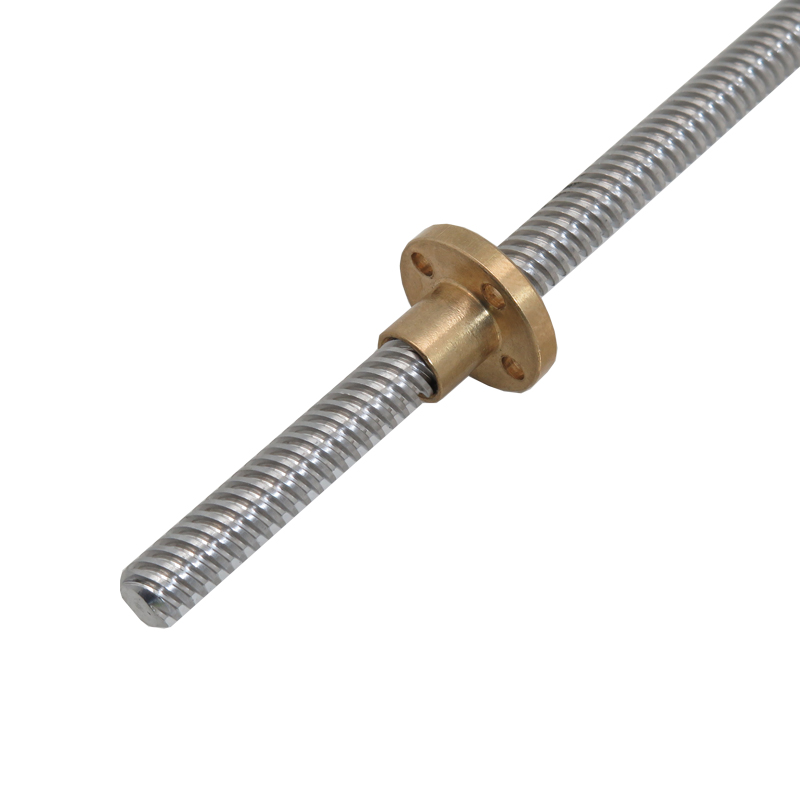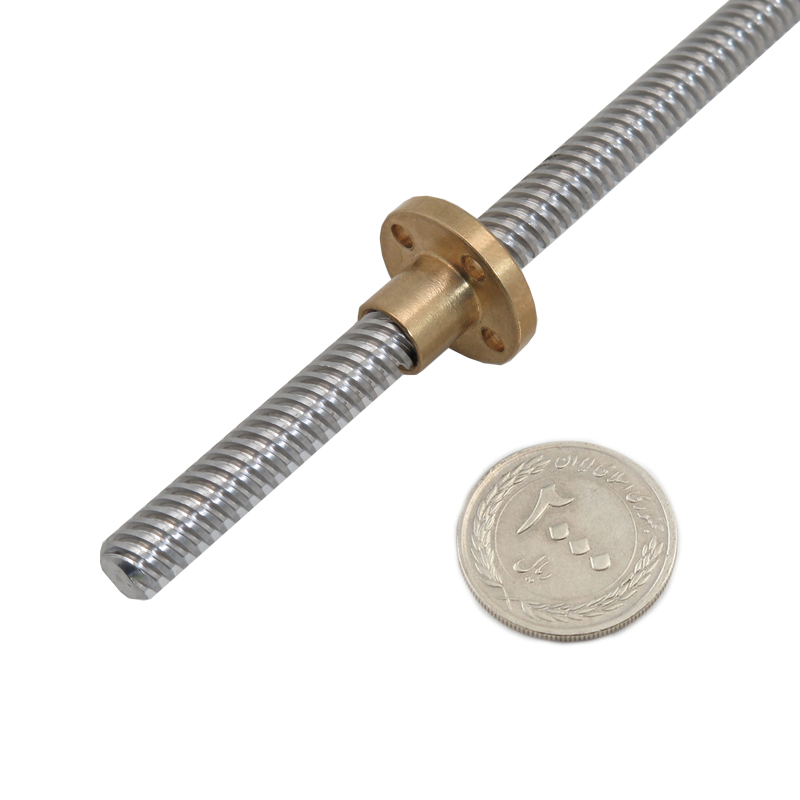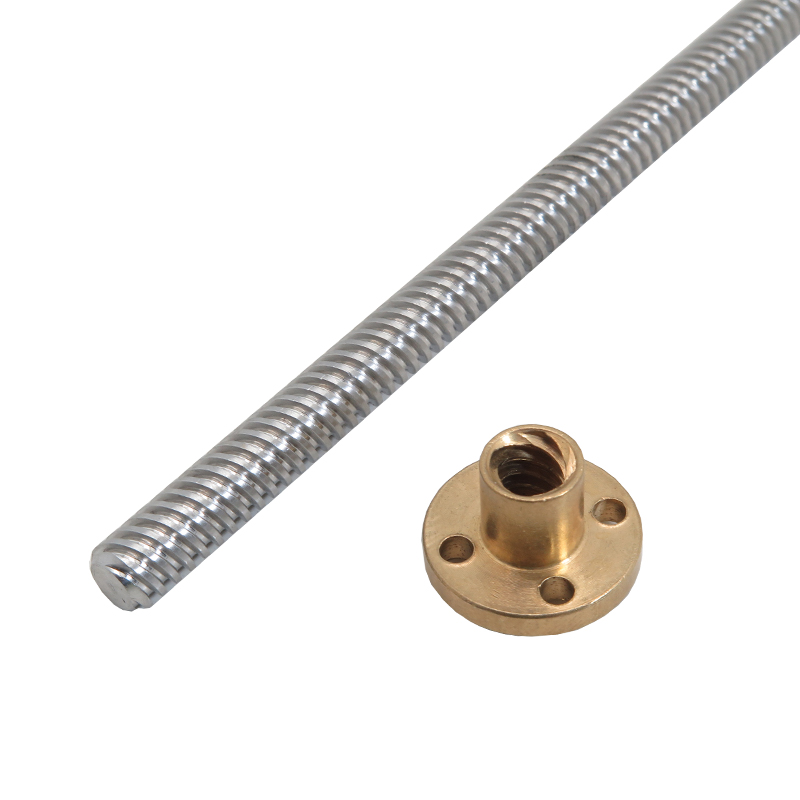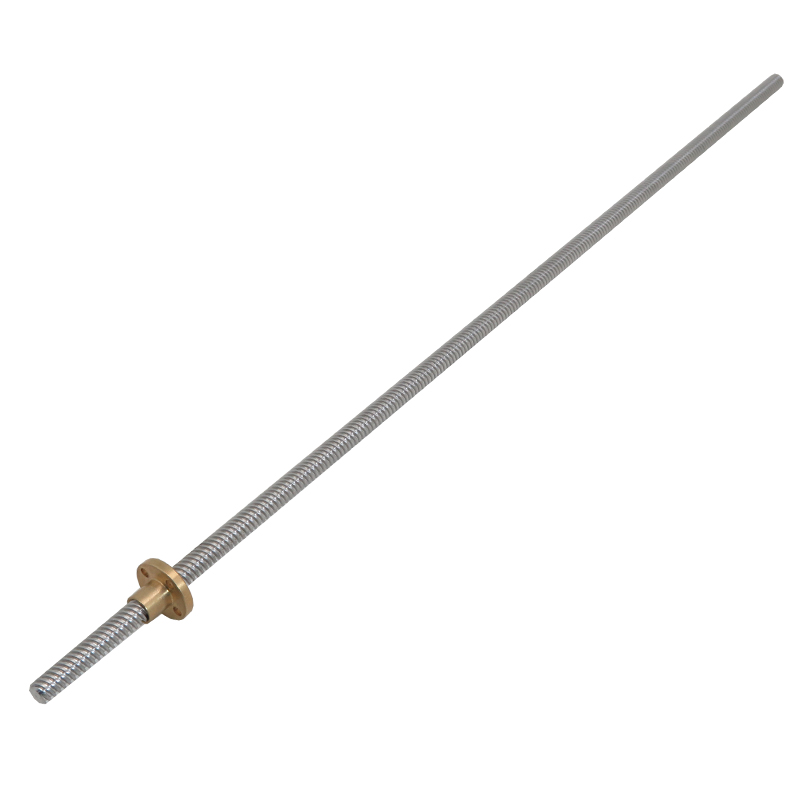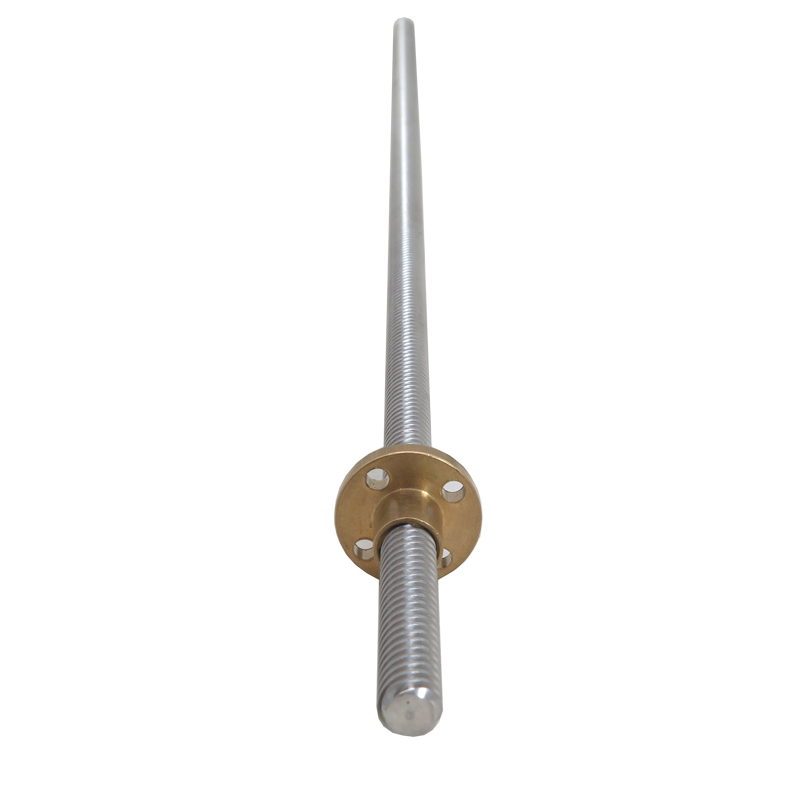247,400 تومان
در حال حاضر موجود نمی باشد
موجودی در حال ارسال به انبار
-
500 عدد1404/07/16
علاقه مندان : 21 نفر
وضعیت : فعال
تعداد مرجوعی : 0
دنبال کنندگان : 28 نفر
قدمت : 10 سال و 1 ماه و 28 روز
وزن : 166 گرم
کل فروش : 2684 عدد
تعداد سفارش ها : 292 سفارش
4 از 5.0 با 30 رای
پیچ و مهره لید اسکرو پرینتر سه بعدی و CNC - پیچ لید اسکرو T8 گام 8 میلی متر طول 50 سانتی متر
پیچ لید اسکرو T8 با مهره T-Type یک قطعه مکانیکی دقیق و کاربردی است که برای تبدیل حرکت چرخشی به حرکت خطی طراحی شده است. این پیچ ها شامل یک پیچ و یک مهره قلاویز شده می باشند که رزوه های آن ها به شکل ذوزنقه ای (دنده کبریتی) و یکنواخت طراحی شده است تا حرکت مهره به صورت روان و بدون لقی انجام شود. در بسیاری از پروژه ها، استفاده از لید اسکرو T8 باعث می شود حرکت محورهای پرینتر سه بعدی و دستگاه های CNC با دقت بالا و بدون خطا انجام شود.
این محصول از جنس آهن کربن دار CK45 با روکش کروم ساخته شده است و مقاومت بالایی در برابر خوردگی و دمای بالا دارند. طول آن 500 میلی متر و قطر آن 8 میلی متر است و گام رزوه آن 8 میلی متر می باشد. طراحی دقیق رزوه ها و توزیع یکنواخت نیرو باعث می شود مهره T-Type بدون اصطکاک اضافی حرکت کند و در فرآیند پرینت سه بعدی یا حرکت محورهای CNC عملکردی پایدار داشته باشد. در پروژه های حساس، لید اسکرو 0.5 متری به کاربران اجازه می دهد تا حرکت خطی طولانی و یکنواخت را با دقت میلی متری تجربه کنند.
پیچ های لید اسکرو به عنوان پیچ های دنده کبریتی با رزوه های ذوزنقه ای شناخته می شوند و شامل یک پیچ و یک مهره می باشند که حرکت چرخشی موتور را به حرکت خطی تبدیل می کنند. استفاده از پیچ قدرتی T8 با مهره در دستگاه های صنعتی و نیمه صنعتی مانند جک های بالابر، CNC و پرینتر سه بعدی، امکان انتقال نیرو با کمترین اصطکاک و بیشترین دقت را فراهم می کند. در کاربردهای پرینتر سه بعدی، پیچ لید اسکرو پرینتر سه بعدی نقش کلیدی در حرکت محورهای دستگاه ایفا می کند و کیفیت پرینت را به طور مستقیم تحت تأثیر قرار می دهد.
این محصول از جنس آهن کربن دار CK45 با روکش کروم ساخته شده است و مقاومت بالایی در برابر خوردگی و دمای بالا دارند. طول آن 500 میلی متر و قطر آن 8 میلی متر است و گام رزوه آن 8 میلی متر می باشد. طراحی دقیق رزوه ها و توزیع یکنواخت نیرو باعث می شود مهره T-Type بدون اصطکاک اضافی حرکت کند و در فرآیند پرینت سه بعدی یا حرکت محورهای CNC عملکردی پایدار داشته باشد. در پروژه های حساس، لید اسکرو 0.5 متری به کاربران اجازه می دهد تا حرکت خطی طولانی و یکنواخت را با دقت میلی متری تجربه کنند.
پیچ های لید اسکرو به عنوان پیچ های دنده کبریتی با رزوه های ذوزنقه ای شناخته می شوند و شامل یک پیچ و یک مهره می باشند که حرکت چرخشی موتور را به حرکت خطی تبدیل می کنند. استفاده از پیچ قدرتی T8 با مهره در دستگاه های صنعتی و نیمه صنعتی مانند جک های بالابر، CNC و پرینتر سه بعدی، امکان انتقال نیرو با کمترین اصطکاک و بیشترین دقت را فراهم می کند. در کاربردهای پرینتر سه بعدی، پیچ لید اسکرو پرینتر سه بعدی نقش کلیدی در حرکت محورهای دستگاه ایفا می کند و کیفیت پرینت را به طور مستقیم تحت تأثیر قرار می دهد.
مقاومت بالای مواد، طول عمر طولانی و طراحی یکنواخت رزوه ها باعث می شود که پیچ لید اسکرو T8 بتواند در طولانی مدت بدون کاهش دقت و با حداقل استهلاک عملکرد مطلوبی ارائه دهد. همچنین در دستگاه های CNC، پیچ لید اسکرو CNC با مهره T-Type باعث می شود حرکت محورهای X، Y و Z به صورت یکنواخت و بدون لقی انجام شود. گام استاندارد رزوه ها و توزیع نیرو، عملکردی پایدار و دقیق ارائه می دهد و مقاومت مکانیکی بالای پیچ، طول عمر محصول را افزایش می دهد.
کاربرد :
- استفاده در پرینترهای سه بعدی برای حرکت دقیق محورهای دستگاه
- استفاده در دستگاه های CNC برای حرکت محورهای X و Y و Z
- استفاده در دستگاه های لیزر برای حرکت میز کاری با دقت بالا
- استفاده در ربات ها و بازوهای مکانیکی برای تبدیل حرکت چرخشی به حرکت خطی
- استفاده در پروژه های صنعتی کوچک و نیمه صنعتی برای انتقال نیرو و حرکت خطی
مشخصات :
- طول پیچ : 50 سانتی متر
- قطر پیچ : 8 میلی متر
- گام رزوه : 8 میلی متر
- جنس پیچ : آهن کربن دار CK45 با روکش کروم
- مقاومت در برابر خوردگی : بالا
- نوع مهره : T-Type قلاویز شده
- ویژگی رزوه : ذوزنقه ای و یکنواخت برای حرکت روان
